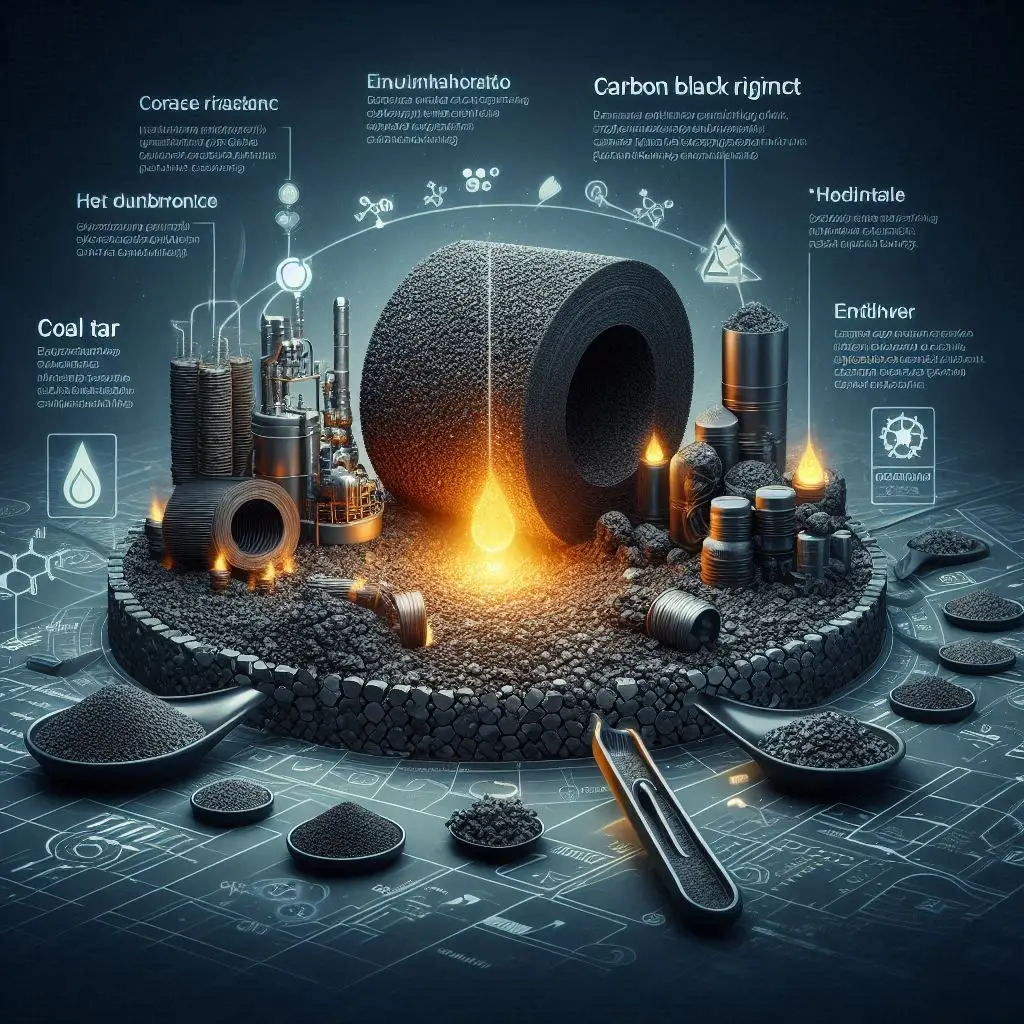
Heat Resistance of Carbon Black Pigment: Applications, Environmental Impact, and Future Prospects
Short Intro:
Carbon black pigment is a versatile material used in inks, paints, and rubber. Understanding its heat resistance and environmental implications is crucial for modern manufacturing.
1) Introduction
SEO Snippet: Learn the fundamentals of carbon black pigment, its composition, and why heat resistance matters in industrial applications.
Carbon black pigment is produced from the incomplete combustion of heavy petroleum products, coal tar, or other organic materials. It is a para-crystalline form of carbon with a surface area-to-volume ratio significantly higher than that of soot. Unlike diesel soot, carbon black contains negligible polycyclic aromatic hydrocarbons (PAHs), making it a safer model material for many tests. Its primary applications include serving as a colorant in plastics, paints, and inks, as well as a reinforcing filler in tires and rubber goods.
The pigment's blackness, measured in Nigro meters, increases as particle size decreases, giving higher-quality carbon blacks more intense coloration. Particle size is critical: for rubber manufacturing, carbon black between 20–30 nm is ideal. Despite its advantages, carbon black’s moisture-absorbing nature—up to 15% by weight—can pose challenges for dispersion in organic media.
LSI Keywords: carbon black composition, industrial carbon pigment, para-crystalline carbon, blackness measurement, Nigro meter, carbon black particle size
External Links:
- American Carbon Black Association (target="_blank", rel="nofollow")
- ScienceDirect on Carbon Black Applications (target="_blank", rel="nofollow")
2) Heat Resistance of Carbon Black Pigment
SEO Snippet: Understand the thermal stability of carbon black pigment and how heat resistance affects paint, plastic, and rubber applications.
Heat resistance, or thermal stability, is a pigment’s ability to maintain its chemical structure under high temperatures. Degradation leads to undesirable effects such as dull, peeling, or chalking paint. Pigments used in color coatings, particularly for wood and metal, must withstand sunlight and UV radiation to preserve color intensity and material durability.
In industrial applications, carbon black pigments are preferred for their high heat tolerance, which allows them to maintain color stability in demanding conditions. For example, automotive coatings and high-performance rubber products rely on pigments that do not break down under high operational temperatures.
LSI Keywords: thermal stability pigment, heat-resistant pigments, carbon black thermal properties, UV-resistant coatings, color stability under heat
External Links:
- Pigment & Resin Technology (target="_blank", rel="nofollow")
3) Environmental Factors to Consider
SEO Snippet: Examine the environmental impact of carbon black pigment production and innovations toward sustainable practices.
Carbon black manufacturing involves incomplete combustion of petroleum products, which generates emissions and raises ecological concerns. The industry is actively pursuing greener methods, such as alternative feedstocks, improved combustion efficiency, and recycling of production waste.
Moisture absorption also influences the environmental footprint of carbon black in storage and application. Manufacturers are exploring ways to enhance compatibility with organic media and reduce environmental impact. Consumer demand for eco-friendly products is encouraging companies to adopt environmentally responsible production processes and comply with eco-labeling standards.
LSI Keywords: carbon black environmental impact, sustainable pigment production, eco-friendly carbon black, industrial emissions reduction, green manufacturing
External Links:
- Environmental Protection Agency (EPA) (target="_blank", rel="nofollow")
- Sustainable Carbon Black Research (target="_blank", rel="nofollow")
4) Future Prospects and Innovations
SEO Snippet: Explore the future of carbon black pigment with nanotechnology, surface chemistry modification, and sustainable industry practices.
Recent advances in nanotechnology aim to improve dispersion in organic media, enhancing the pigment’s overall performance. Surface chemistry modifications increase moisture resistance and compatibility with various materials. Collaborative initiatives are being implemented to standardize sustainable carbon black manufacturing.
Eco-friendly and certified processes are becoming more common to meet regulatory and consumer demands. These innovations position carbon black as a material that balances high performance with environmental responsibility, opening new applications in advanced plastics, coatings, and industrial composites.
LSI Keywords: carbon black nanotechnology, pigment surface modification, sustainable carbon black, eco-friendly pigments, future pigment innovations
External Links:
- Journal of Nanomaterials (target="_blank", rel="nofollow")
5) Conclusion
SEO Snippet: Carbon black pigment combines heat resistance, performance benefits, and sustainability potential, making it a critical material across industries.
In summary, carbon black pigment is essential for modern manufacturing due to its heat resistance, high coloring power, and functional versatility. Environmental sustainability remains a key focus, with ongoing research improving production efficiency, reducing emissions, and enhancing material performance. Companies leveraging these innovations can ensure long-lasting, high-quality products while meeting ecological standards.
LSI Keywords: carbon black conclusion, heat-resistant pigment summary, sustainable pigment industry, carbon black future applications
External Links:
- American Chemical Society: Carbon Black Overview (target="_blank", rel="nofollow")
6) About NovinTrades
SEO Snippet: Learn how NovinTrades supports the petroleum and chemical industries with high-quality materials, insights, and reportages.
As part of this mission, NovinTrades provides a dedicated Reportage Section where businesses and industry professionals can publish in-depth sponsored articles, analyses, and thought-leadership pieces. This section helps boost online visibility, strengthen brand authority, and engage decision-makers and potential buyers.
We invite readers to explore other articles, reportages, and market insights on NovinTrades to gain deeper knowledge about industrial pigments, chemicals, and materials. Connect with NovinTrades on Telegram for real-time updates and industry news.
LSI Keywords: NovinTrades overview, industry reportages, petroleum product insights, chemical industry updates
External Links:
- NovinTrades Reportages (target="_blank")
- NovinTrades Telegram (target="_blank")

